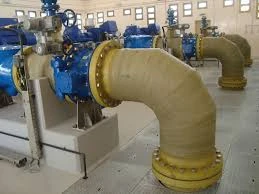
-
 Afrikaans
Afrikaans -
 Albanian
Albanian -
 Amharic
Amharic -
 Arabic
Arabic -
 Armenian
Armenian -
 Azerbaijani
Azerbaijani -
 Basque
Basque -
 Belarusian
Belarusian -
 Bengali
Bengali -
 Bosnian
Bosnian -
 Bulgarian
Bulgarian -
 Catalan
Catalan -
 Cebuano
Cebuano -
 China
China -
 China (Taiwan)
China (Taiwan) -
 Corsican
Corsican -
 Croatian
Croatian -
 Czech
Czech -
 Danish
Danish -
 Dutch
Dutch -
 English
English -
 Esperanto
Esperanto -
 Estonian
Estonian -
 Finnish
Finnish -
 French
French -
 Frisian
Frisian -
 Galician
Galician -
 Georgian
Georgian -
 German
German -
 Greek
Greek -
 Gujarati
Gujarati -
 Haitian Creole
Haitian Creole -
 hausa
hausa -
 hawaiian
hawaiian -
 Hebrew
Hebrew -
 Hindi
Hindi -
 Miao
Miao -
 Hungarian
Hungarian -
 Icelandic
Icelandic -
 igbo
igbo -
 Indonesian
Indonesian -
 irish
irish -
 Italian
Italian -
 Japanese
Japanese -
 Javanese
Javanese -
 Kannada
Kannada -
 kazakh
kazakh -
 Khmer
Khmer -
 Rwandese
Rwandese -
 Korean
Korean -
 Kurdish
Kurdish -
 Kyrgyz
Kyrgyz -
 Lao
Lao -
 Latin
Latin -
 Latvian
Latvian -
 Lithuanian
Lithuanian -
 Luxembourgish
Luxembourgish -
 Macedonian
Macedonian -
 Malgashi
Malgashi -
 Malay
Malay -
 Malayalam
Malayalam -
 Maltese
Maltese -
 Maori
Maori -
 Marathi
Marathi -
 Mongolian
Mongolian -
 Myanmar
Myanmar -
 Nepali
Nepali -
 Norwegian
Norwegian -
 Norwegian
Norwegian -
 Occitan
Occitan -
 Pashto
Pashto -
 Persian
Persian -
 Polish
Polish -
 Portuguese
Portuguese -
 Punjabi
Punjabi -
 Romanian
Romanian -
 Russian
Russian -
 Samoan
Samoan -
 Scottish Gaelic
Scottish Gaelic -
 Serbian
Serbian -
 Sesotho
Sesotho -
 Shona
Shona -
 Sindhi
Sindhi -
 Sinhala
Sinhala -
 Slovak
Slovak -
 Slovenian
Slovenian -
 Somali
Somali -
 Spanish
Spanish -
 Sundanese
Sundanese -
 Swahili
Swahili -
 Swedish
Swedish -
 Tagalog
Tagalog -
 Tajik
Tajik -
 Tamil
Tamil -
 Tatar
Tatar -
 Telugu
Telugu -
 Thai
Thai -
 Turkish
Turkish -
 Turkmen
Turkmen -
 Ukrainian
Ukrainian -
 Urdu
Urdu -
 Uighur
Uighur -
 Uzbek
Uzbek -
 Vietnamese
Vietnamese -
 Welsh
Welsh -
 Bantu
Bantu -
 Yiddish
Yiddish -
 Yoruba
Yoruba -
 Zulu
Zulu
High-Quality FRP Pipes and Fittings for Durable Solutions
Understanding FRP Pipes and Fittings A Comprehensive Overview
Fiber Reinforced Plastic (FRP) pipes and fittings have emerged as pivotal components in various industries owing to their superior properties and versatile applications. These innovative products seamlessly combine the durability of traditional materials with the lightweight and corrosion-resistant features of modern composites. This article delves into the characteristics, benefits, and applications of FRP pipes and fittings, highlighting their increasing significance in today’s infrastructure.
What is FRP?
FRP is a composite material made from a polymer matrix reinforced with fibers, commonly glass, carbon, or aramid. This combination results in a product that is not only strong but also lightweight and resistant to corrosion, making it suitable for a myriad of applications. FRP pipes and fittings are manufactured through processes like pultrusion, filament winding, and resin transfer molding, each method contributing to the material’s robustness and integrity.
Key Advantages
1. Corrosion Resistance One of the standout features of FRP pipes is their resistance to corrosion. Unlike traditional metal pipes, which can suffer from rust and degradation due to chemical exposure, FRP pipes remain unaffected by a wide range of corrosive substances. This makes them ideal for transporting chemicals, wastewater, and in maritime applications.
2. Lightweight FRP pipes are significantly lighter than their metal or concrete counterparts. This characteristic not only reduces transportation costs but also simplifies installation processes. Workers can handle and install FRP materials with greater ease, leading to time and labor savings.
3. High Strength-to-Weight Ratio Despite their lightweight nature, FRP pipes boast impressive tensile strength, making them capable of handling high-pressure applications. They can withstand harsher conditions than standard piping materials, ensuring longevity and reliability.
frp pipes and fittings

4. Thermal Insulation The thermal insulation properties of FRP can lead to energy savings in applications that involve temperature-sensitive materials. This characteristic helps maintain the desired temperature of the transported materials, particularly in industries like oil and gas.
5. Low Maintenance FRP pipes require minimal maintenance compared to traditional pipe materials. Their resistance to corrosion means fewer repairs and replacements over time, leading to lower overall lifecycle costs.
Applications of FRP Pipes and Fittings
FRP pipes and fittings are utilized in a diverse range of industries, including
- Oil and Gas For the transportation of corrosive fluids and gases. - Water Treatment In both municipal and industrial water treatment facilities to handle chemicals and wastewater effectively. - Construction Used in infrastructure projects, such as stormwater management systems, due to their lightweight and durable nature. - Mining For conveying slurries and chemicals resistant to corrosion.
Conclusion
In conclusion, FRP pipes and fittings represent a significant advancement in piping technology, overcoming many limitations associated with traditional materials. Their superior properties, including corrosion resistance, lightweight, and low maintenance, make them an excellent choice for a multitude of applications across various sectors. As industries continue to evolve and embrace innovation, the demand for FRP solutions is expected to grow, affirming their position as a critical component of modern infrastructure. Whether in industrial settings or infrastructural projects, FRP pipes and fittings are paving the way for more efficient, durable, and reliable piping systems.
Latest news
-
Exploring the Benefits of Top Hammer Drifter Rods for Enhanced Drilling PerformanceNewsJun.10,2025
-
High-Precision Fiberglass Winding Machine for GRP/FRP Pipe Production – Reliable & Efficient SolutionsNewsJun.10,2025
-
FRP Pipes & Fittings for Shipbuilding - Corrosion-Resistant & LightweightNewsJun.09,2025
-
Premium FRP Flooring Solutions Durable & Slip-ResistantNewsJun.09,2025
-
Premium Fiberglass Rectangular Tanks Durable & Lightweight SolutionNewsJun.09,2025
-
Tapered Drill String Design Guide Durable Performance & UsesNewsJun.09,2025









